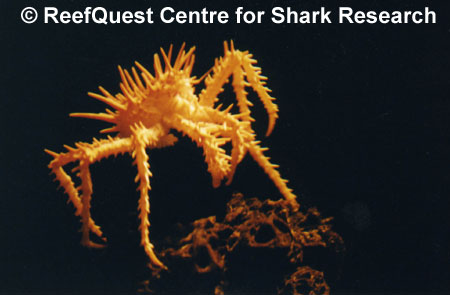Deep Sea:
the Twilight Zone and Beyond
The deep-sea is far and away the single largest habitat on our planet. It is also the most mysterious part of our world. Less than 1% of the ocean has been explored and even less has been sampled biologically. Yet living things are fantastically abundant here. Those creatures we have discovered in the ocean’s depths are often as strange, bizarre, and downright ‘alien’ as anything imaginable. Burgeoning world demand for new protein and mineral resources make it inevitable that deep-sea exploration and commercial exploitation will become increasingly important.
Sunlight penetrates only the uppermost layers of the ocean, down to a depth of perhaps 300 to 600 feet (100 to 200 metres). This is the “epipelagic zone”, and by far the best understood part of the open ocean. Below the epipelagic is the “mesopelagic zone”, a world of perpetual twilight where what little sunlight wells down from above is too attenuated to support photosynthesis. Below the mesopelagic, which extends down to a depth of about 3,000 feet (1,000 metres), there is no sunlight at all. Here the true ocean depths begin. An incredible 72 percent of the ocean’s surface lies over water more than 2 miles (3.2 kilometres) deep that never sees the light of day.

The dimly-lit mesopelagic or ‘midwater’ zone is a transition zone between the warm, oxygen-rich surface layers and the cold, oxygen-poor deep water. At high latitudes in both hemispheres, oxygen-rich surface water becomes very cold and salty, increasing its density and causing it to sink. This “surface overturn” brings dissolved oxygen to the deep and bottom layers of the ocean. At variable depths there also occurs a sharp drop in temperature. This is the “main thermocline” and it acts as a thermal barrier separating epipelagic and deep-sea creatures. In many places, at depths of about 1,600 feet (500 metres), there occurs an “oxygen minimum layer”, where respiration of midwater animals reduces dissolved oxygen levels to almost nil.
Yet many mesopelagic creatures — krill, copepods, shrimps, squids, and small teleost fishes such as lanternfishes and bristlemouths — are vertical migrators, moving surfaceward each night — punching through the thermocline and oxygen minimum layer — to feed briefly in the rich surface waters before returning to the depths by dawn’s first glimmer. Most vertical migrators are small but well-muscled, have large, well-developed eyes and are brightly bioluminescent. They must accommodate an extraordinary range of temperatures and pressures.
In contrast, non-migratory deep-sea bottom-dwellers are typically large and either sessile deposit feeders or flabby and incredibly slow-swimming. Most of them have tiny eyes and very few are luminescent. They live in a stygian world of permanent darkness, eternal cold, unimaginable pressures, and virtually no food. What little organic matter sinks to the ocean bottom consists mostly of bacteria, excreted fecal pellets, shed mucus and crustacean shells — a steady flurry of tiny flakes of nutrient-depauperate matter termed “marine snow”.
Scattered along the ocean bottom where plates in the Earth’s crust meet are “hydrothermal vents”, places where volcanic activity spews clouds of hot, mineral-rich gases into the sea. These clouds superheat the surrounding water to as much as 700 degrees Fahrenheit (370 degrees Celsius) and load it with hydrogen-sulfide. In waters close to these vents, chemosynthetic (as opposed to photosynthetic) bacteria reduce sulfur compounds into energy-storing molecules. From improbably harsh beginnings, these sulfur-fixing bacteria ‘kick start’ a novel and astonishingly diverse ecosystem, one founded on symbiotic relationships with clams, mussels and tube worms, which — in turn — lure scavenging crabs, hagfishes, teleosts and sharks.
